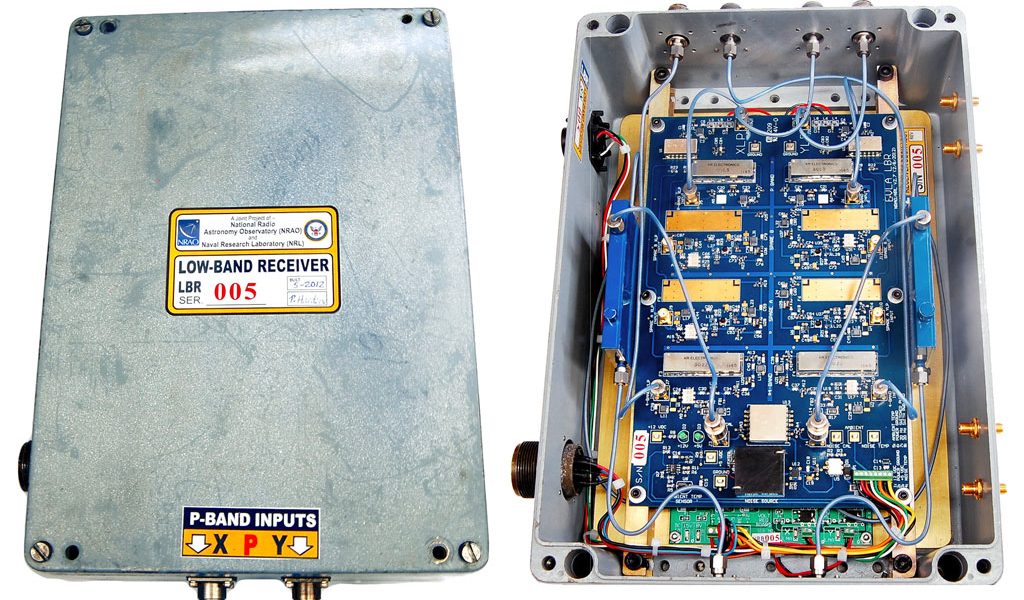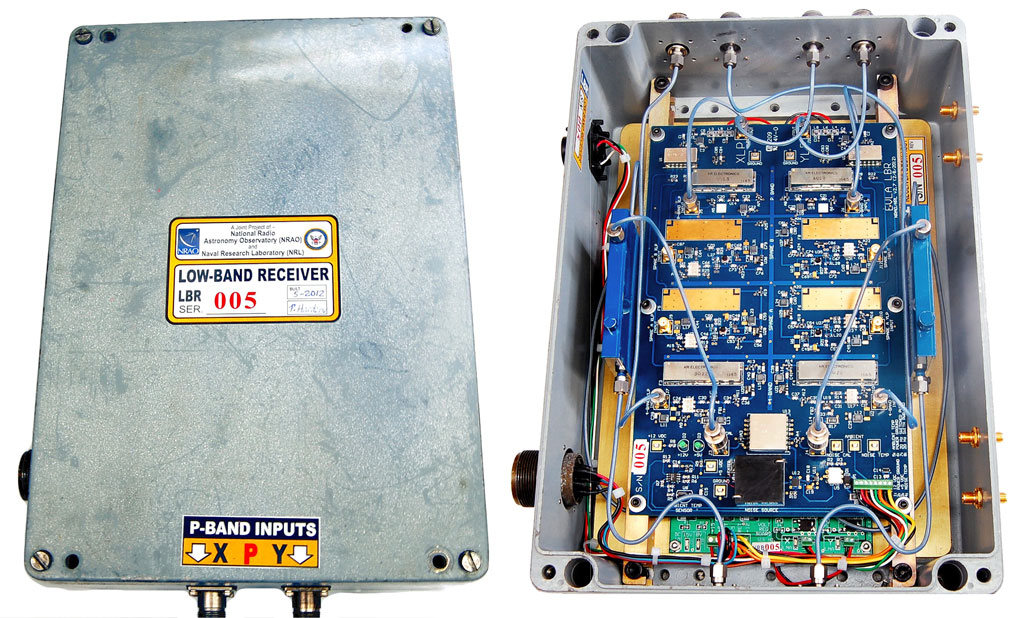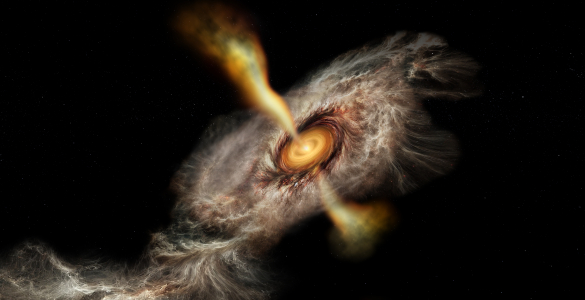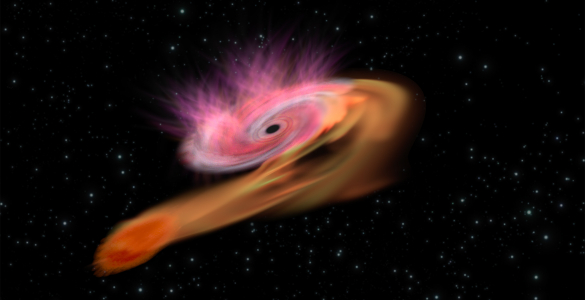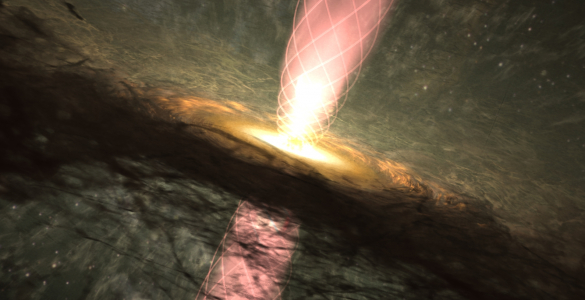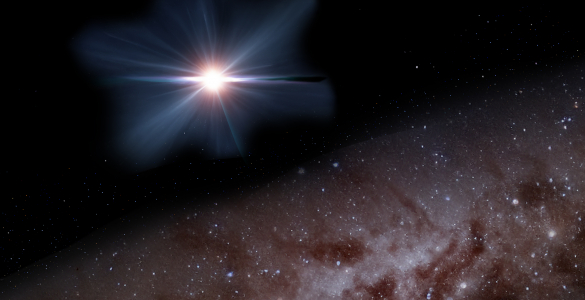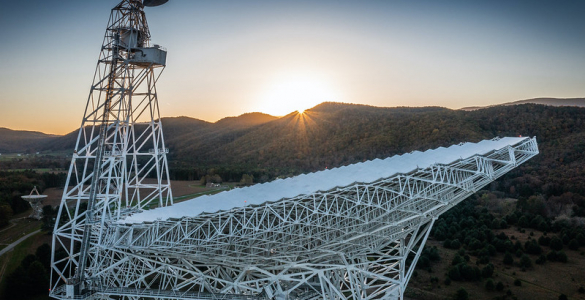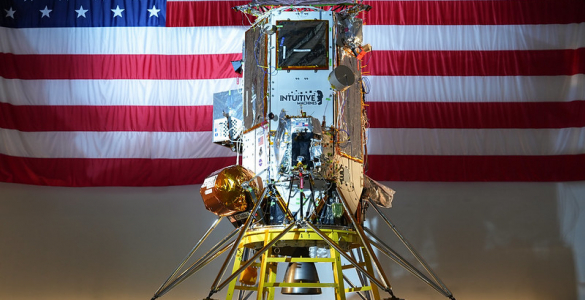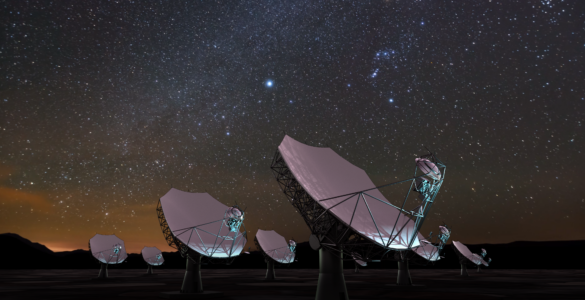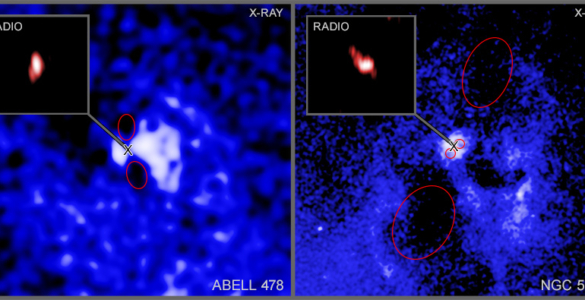A new system that makes the Karl G. Jansky Very Large Array (VLA) two telescopes in one has been completed and its scientific operations are underway. The new system, called VLITE (VLA Ionospheric and Transient Experiment), allows the VLA to continuously monitor the sky to study the Earth’s ionosphere and detect short bursts of radio emission from astronomical objects.
VLITE uses low-frequency radio receivers mounted on VLA antennas to provide simultaneous and completely independent operation alongside the VLA’s standard scientific observations. VLITE was designed and built by the National Radio Astronomy Observatory (NRAO) under a $1 million contract with the Naval Research Laboratory (NRL).
“That the period of design, construction, and commissioning for such a complex project was completed on time and under budget within a single year has been truly amazing,” said Namir Kassim, head of NRL’s Radio Astrophysics and Sensing Section. “We embark on the scientific operations phase of the project with enthusiasm and high expectation,” Kassim added.
Operating at 230-436 MHz, near radio frequencies used for UHF broadcast television, VLITE taps data from 10 VLA antennas and operates independently of the VLA’s higher-frequency observing systems, using a separate path for data transmission and processing. It is a pathfinder for a proposed larger system called the Low Band Observatory (LOBO) that would equip all 27 antennas of the VLA.
VLITE will provide valuable data for both ionospheric research and astronomy. It allows scientists to constantly monitor Earth’s ionosphere, studying a number of phenomena, including disturbances that can affect signals from GPS satellites. Things that can affect the ionosphere include geomagnetic storms, seismic events, and gravity waves generated by a variety of natural and man-made sources, including explosions and underground nuclear tests,
Astronomers will use VLITE to explore the sky for short-lived bursts of radio waves. This type of research is growing in importance, since a small number of such events have led astronomers to suspect that still-undiscovered phenomena in the Universe may be producing many such powerful bursts.
“We are proud of the professionalism of the NRAO team that worked with their NRL counterparts to efficiently produce a system that multiplies the scientific capability of the VLA,” said NRAO Director Tony Beasley.
The National Radio Astronomy Observatory is a facility of the National Science Foundation, operated under cooperative agreement by Associated Universities, Inc.






